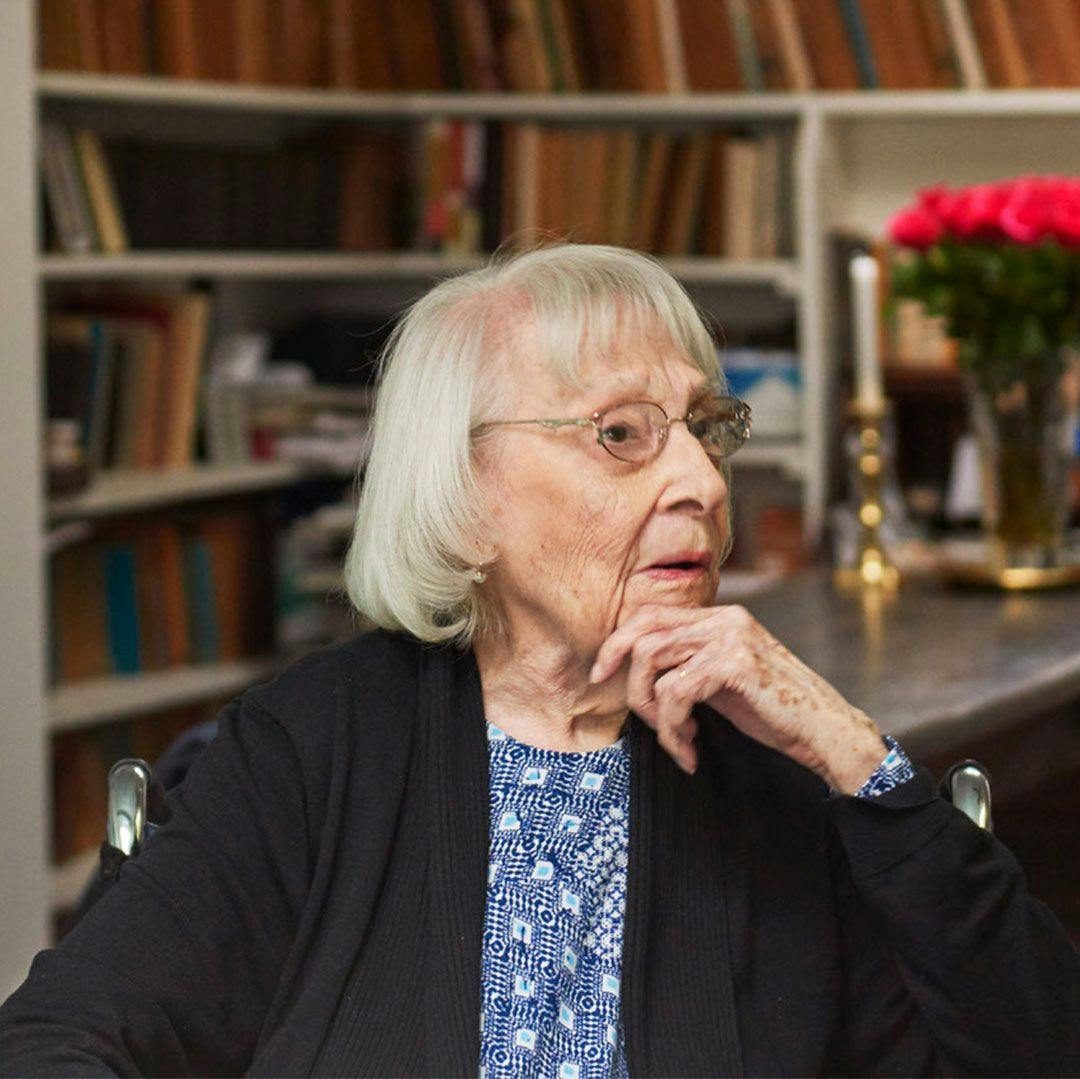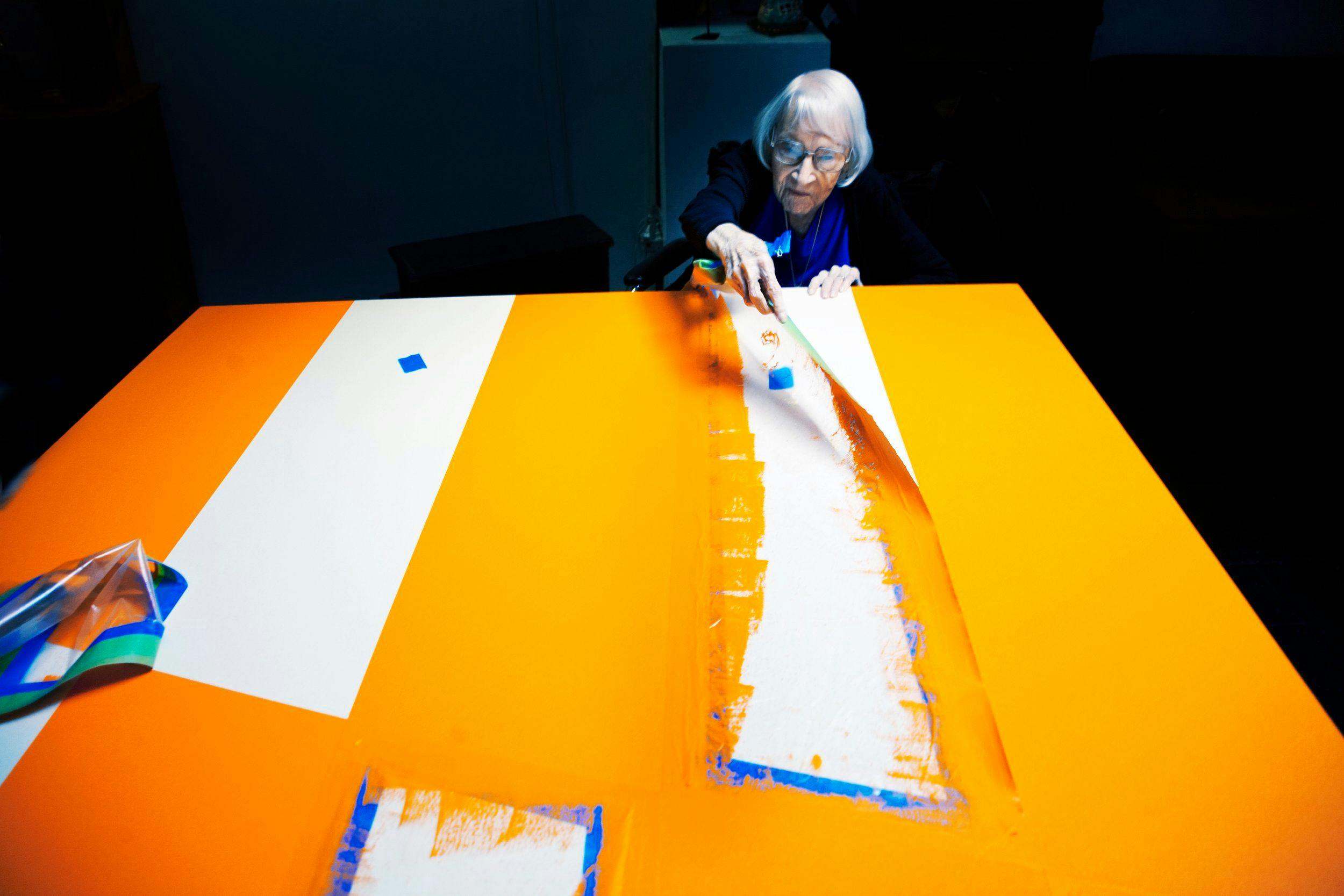Carmen Herrera
Year born:
1915-2022
Location:
Born in Havana, Cuba
Core to Carmen Herrera’s painting was a drive for formal simplicity and a striking sense of color: “My quest,” she said, “is for the simplest of pictorial resolutions” (2012). A master of crisp lines and contrasting chromatic planes, Herrera created symmetry, asymmetry, and an infinite variety of movement, rhythm, and spatial tension across the canvas with the most unobtrusive application of paint.
As she moved away from biomorphism towards pure, geometric abstraction during her time in Paris in the later 1940s, she began making shaped, elliptical, and tondo canvases, in addition to pioneering the use of solvent-based acrylic paints in postwar Europe. She exhibited alongside Theo van Doesburg, Max Bill, and Piet Mondrian and a younger generation of Latin American artists, such as members of the Venezuelan Los Disidentes, Brazilian Concretists, and the Argentinian Grupo Madí.
By the mid-1960s she had experimented with much reduced palettes, pairing black or green with white – “like saying yes and no” – before leaving the picture plane entirely and beginning work on her first Estructuras, a series of sculptural works occupying the wall, floor, and the public realm, which also paid homage to her earlier training in architecture. Reflecting on this mid-century period, she said, “I began a lifelong process of purification, a process of taking away what isn’t essential” (2005).
Herrera’s growing body of work established, quietly but steadily, a cross-cultural dialogue within the international history of modernist abstraction. Her work also chimes with her peers such as Barnett Newman and Leon Polk Smith. While receiving increasing plaudits and museum recognition later in life, Herrera remained grounded throughout, stating when aged 105 that: “Being ignored is a form of freedom. I felt liberated from having to constantly please anyone.”
Carmen Herrera was born in Havana, Cuba, in 1915. She moved frequently between France and Cuba throughout the 1930s and 1940s; having started studying architecture at the Universidad de La Habana, Havana, Cuba (1938–39), she trained at the Art Students League, New York, NY, USA (1942– 43), before exhibiting five times at the Salon des Réalités Nouvelles, Musée d’Art Moderne de la Ville de Paris, France (1949–53). She settled in New York in 1954, where she lived and worked until her death in 2022.
Herrera’s work was the subject of a large-scale survey, Carmen Herrera: Lines of Sight, at the Whitney Museum of American Art, New York, NY, USA (2016), which traveled to the Wexner Center for the Arts, Columbus, OH, USA (2017) and Kunstsammlung Nordrhein-Westfalen (K20), Düsseldorf, Germany (2017–2018). Herrera has also had significant solo exhibitions at the Museum of Fine Arts Houston, TX, USA (2020); Museum Pfalzgalerie Kaiserslautern, Germany (2010); Ikon Gallery, Birmingham, UK (2009); and El Museo del Barrio, New York, NY, USA (1998).
From 2018-2020, her work was featured in the exhibition Epic Abstraction: Pollock to Herrera at The Metropolitan Museum of Art in New York. Herrera premiered her Estructuras Monumentales, massive aluminum structures largely conceived in the 1960s and 1970s, at City Hall Park in New York City in 2019, organized by the Public Art Fund. Herrera’s large-scale mural Verde, que te quiero verde (2020) was unveiled at the Blanton Museum of Art in Austin, Texas, in May of 2023 as part of the museum’s grounds redesign.
Herrera’s work is in numerous public and private collections including the National Gallery of Art, Washington D.C., USA; the Museum of Modern Art, New York, NY, USA; the Whitney Museum of American Art, New York, USA; the Metropolitan Museum of Art, New York, NY, USA; the Tate Collection, London, UK; Kunstsammlung Nordrhein-Westfalen (K20), Düsseldorf, Germany; the Guggenheim Abu Dhabi, United Arab Emirates; El Museo del Barrio, New York, NY, USA; the Hirshhorn Museum, Washington D.C., USA; the Smithsonian American Art Museum, Washington D.C., USA; the Walker Art Center, Minneapolis, MN, USA; the Museum of Fine Arts Boston, MA, USA; the Pérez Art Museum, Miami, FL, USA; Crystal Bridges Museum of Art, Bentonville, AR, USA; the Cleveland Museum of Art, OH, USA; the Blanton Museum of Art, University of Austin, TX, USA; and the Morgan Library & Museum, New York, NY, USA.


